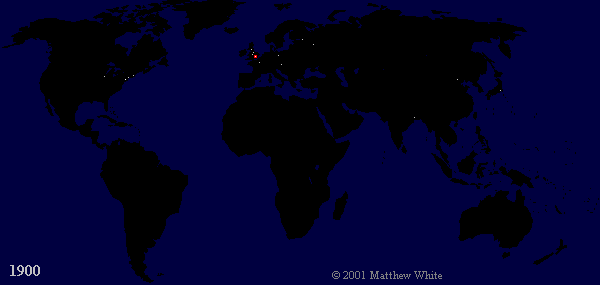
- Each white dot indicates an urban area with a population of over a million.
- Each red square indicates an urban population of over five million.
- To stop the animation, click STOP.
- To resume, click RELOAD or REFRESH.
 |
|
![]()
![]()
NOTE: Throughout this atlas, whenever I talk about the population of a city, I am refering to the entire population cluster, not the legally defined administrative unit that goes by the specific name.

Last updated July 2001
Copyright © 2001 Matthew White